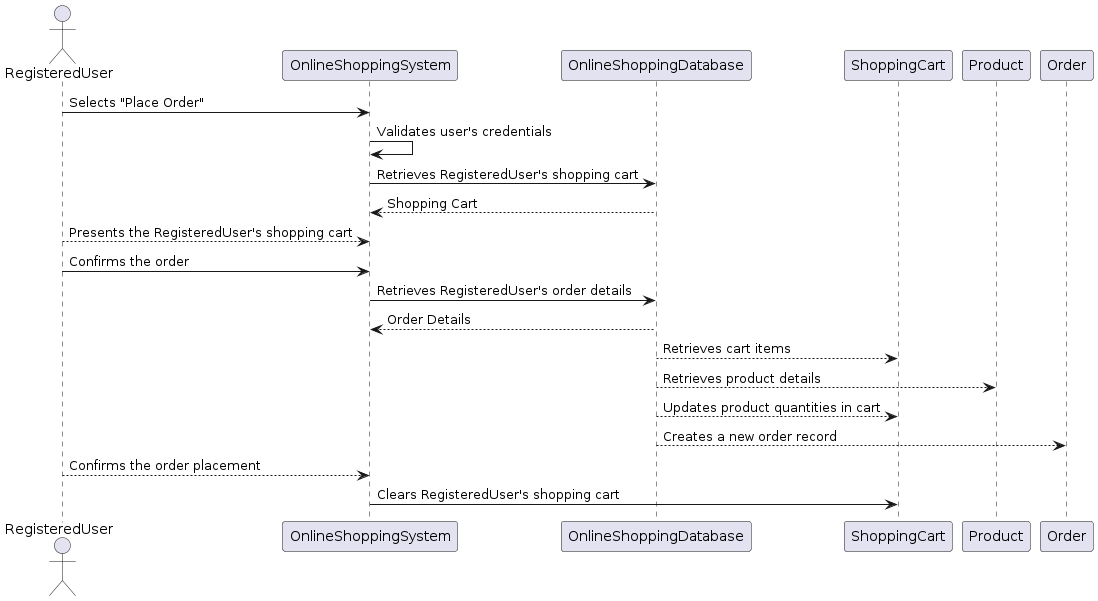Streamlining Software Development: Unifying Use Cases, ERDs, and Sequence Diagrams for Effective System Design
Introduction
In the realm of software development and systems analysis, understanding the interactions between different components of a system is paramount. Use cases and Entity-Relationship Diagrams (ERDs) are two essential tools that help developers and stakeholders gain a comprehensive view of a system’s functionality and its underlying data structure. In this article, we will explore the benefits of elaborating a use case with an ERD and provide an example to illustrate this approach.
Understanding Use Cases
Use cases are a fundamental aspect of requirements analysis and are commonly used in software engineering to capture and describe interactions between an actor (usually a user or another system) and a system. They provide a high-level view of a system’s functionality by describing the steps involved in achieving a specific goal or task. Use cases typically include actors, preconditions, main flow, alternative flows, and postconditions.
The Role of Entity-Relationship Diagrams (ERDs)
On the other hand, ERDs are a graphical representation of the data model within a system. ERDs help depict how different entities (such as tables in a database) relate to one another. They illustrate the relationships between entities, the attributes of each entity, and the cardinality of these relationships (e.g., one-to-one, one-to-many, or many-to-many).
Elaborating a Use Case with an ERD
Elaborating a use case with an ERD involves linking the functional aspects of a use case with the underlying data structure. This approach provides several significant benefits:
1. Improved Clarity
By visualizing how data is used within a use case, stakeholders can better understand the flow of information and how it relates to the user’s actions. This increased clarity ensures that everyone involved has a shared understanding of the system’s behavior.
2. Enhanced Requirement Validation
Linking use cases with ERDs helps identify any missing or conflicting requirements. It becomes easier to spot discrepancies between what a use case describes and how the data is structured. This leads to more accurate and complete requirements.
3. Better Design Decisions
When developing a system, decisions related to database design, data storage, and data retrieval are crucial. Elaborating use cases with ERDs allows designers and developers to make informed decisions about database schema, ensuring that it aligns with the system’s functionality.
4. Efficient Development
Developers can use the use case-ERD connection to prioritize their work. They can focus on implementing the parts of the system that are most critical to the use cases, leading to more efficient development.
Example: Online Shopping System
Let’s consider an example of how to elaborate a use case with an ERD for an online shopping system.
Use Case: “Add Item to Cart”
Use Case Description:
- Actor: Registered User
- Preconditions: User is logged in.
-
Main Flow:
- User searches for a product.
- User selects a product from the search results.
- User clicks the “Add to Cart” button.
- System adds the selected product to the user’s shopping cart.
- User continues shopping or proceeds to checkout.
- Postconditions: Product is in the user’s shopping cart.
Elaborating with an ERD:
To elaborate on this use case with an ERD, we can create an entity-relationship diagram that represents the relevant entities and their relationships:
-
Entities:
- User
- Product
- Shopping Cart
- Order
-
Relationships:
- User can have multiple shopping carts (one-to-many).
- Product can be added to multiple shopping carts (many-to-many).
- Shopping Cart can contain multiple products (many-to-many).
- User can place multiple orders (one-to-many).
- Order can contain multiple products (many-to-many).
By connecting the use case to the ERD, we ensure that the “Add Item to Cart” use case is linked to the relevant entities and their interactions. This clarity helps in implementing the use case and designing the underlying data model effectively.
Elaborating a use case with an ERD provides numerous benefits, including improved clarity, enhanced requirement validation, better design decisions, and more efficient development. This approach ensures that the system’s functionality aligns seamlessly with its data structure, leading to a more robust and effective software solution.
Unifying Use Cases, ERDs, and Sequence Diagrams
Let’s consider a scenario for an online shopping system and demonstrate how a Sequence Diagram can interlink the Use Case and Entity-Relationship Diagram (ERD) to depict a specific interaction between a user, the system, and the underlying data structure.
Use Case Scenario: “Place Order”
In this scenario, a registered user places an order for items in their shopping cart. We’ll create a Sequence Diagram to illustrate the interactions involved in this scenario and link it to the Use Case and ERD.
Summary
Effective software development relies on a clear understanding of user requirements and the seamless integration of functionality and data structures. In this article, we have explored the process of elaborating Use Cases with Entity-Relationship Diagrams (ERDs) and Sequence Diagrams, demonstrating how this approach can provide a comprehensive view of system behavior.
By linking Use Cases with ERDs, we achieve improved clarity, enhanced requirement validation, and more informed design decisions. This ensures that the system aligns seamlessly with its underlying data structure. In our example of an online shopping system, we saw how these tools can be interconnected to provide a deeper insight into the “Place Order” scenario.
In a rapidly changing technological landscape, the ability to bridge the gap between abstract concepts and practical implementation is invaluable. Elaborating Use Cases with ERDs and Sequence Diagrams empowers software developers and stakeholders to build systems that meet user needs with precision and efficiency, ultimately leading to the successful delivery of robust and effective software solutions.


